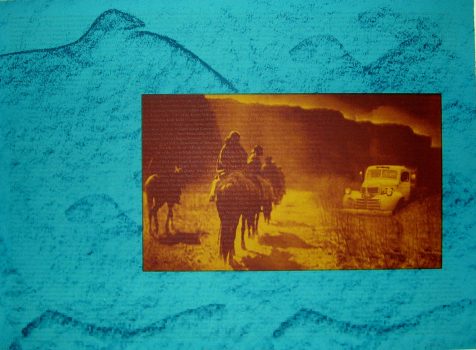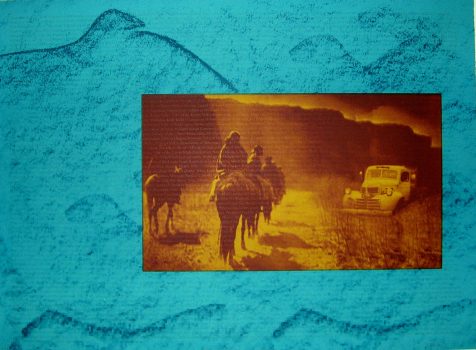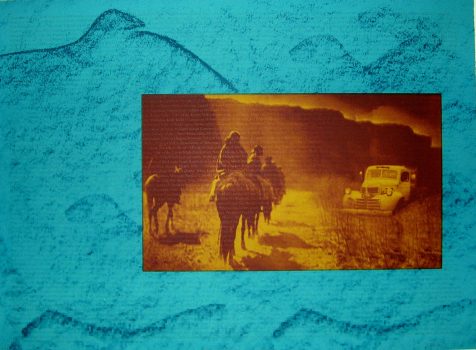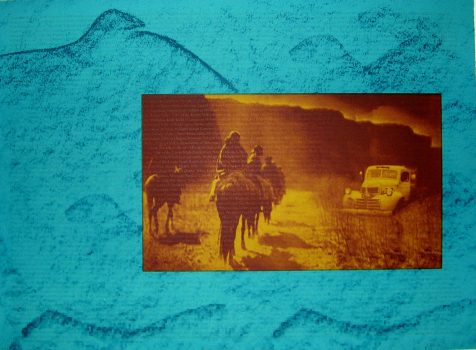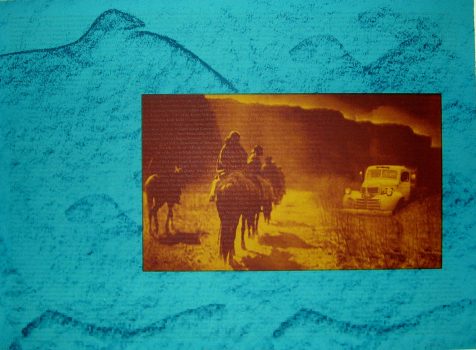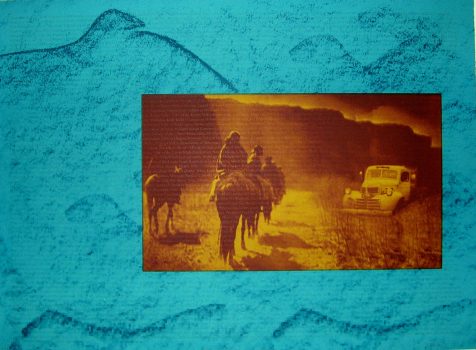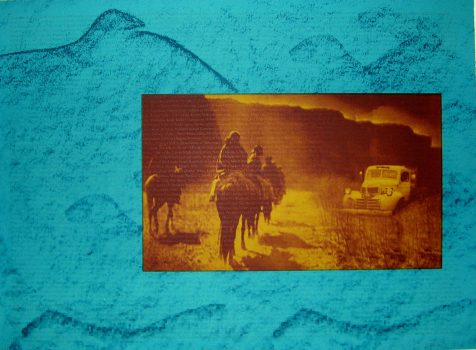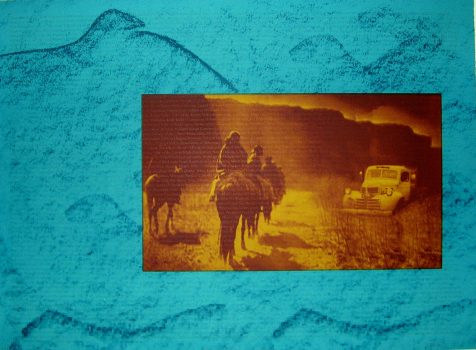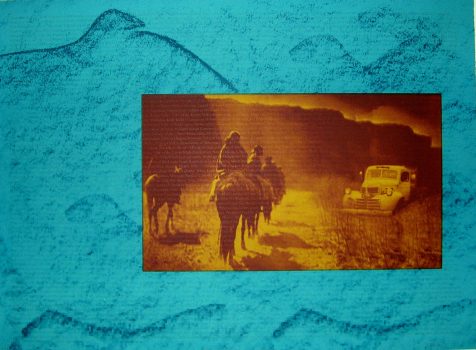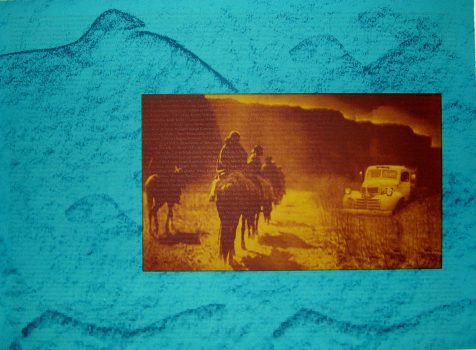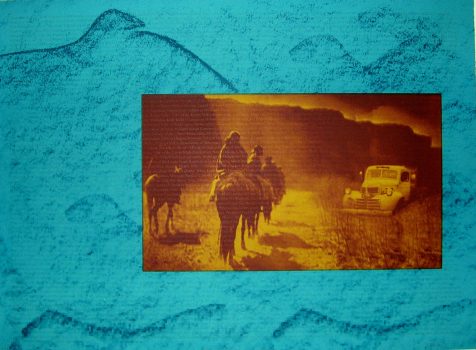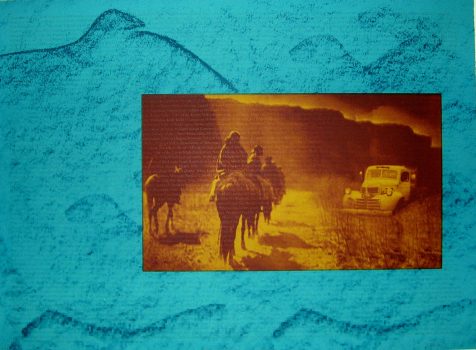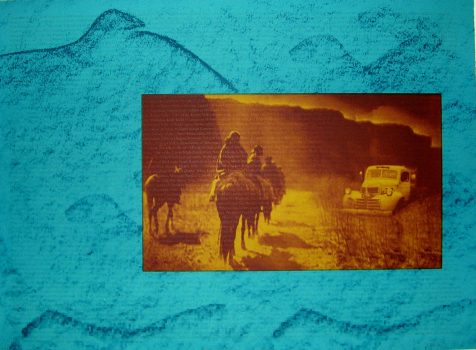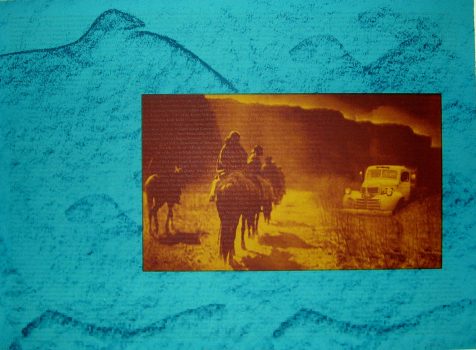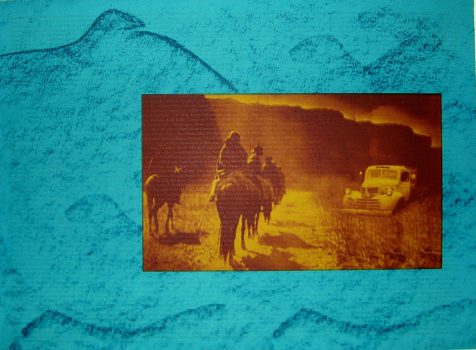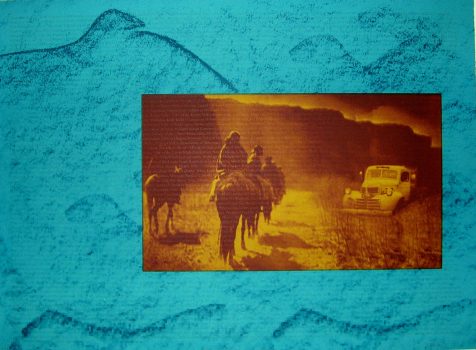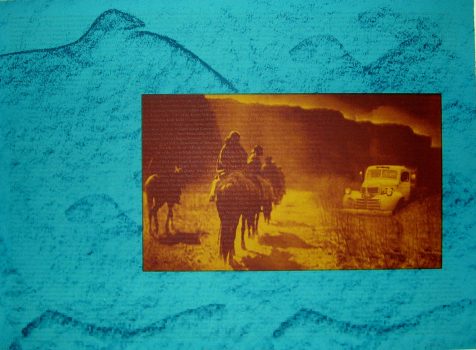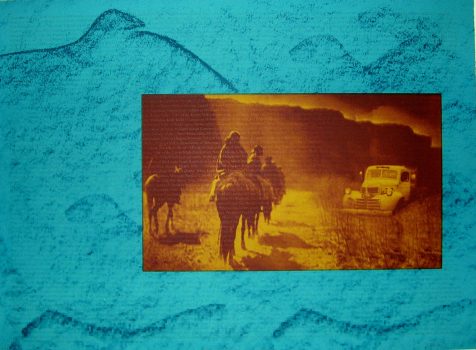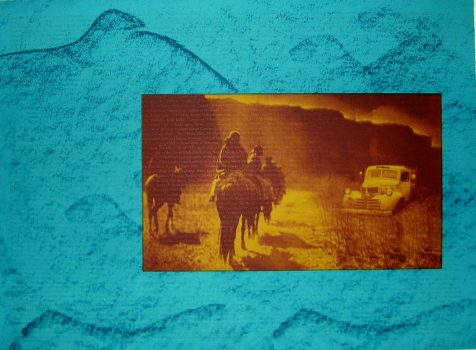
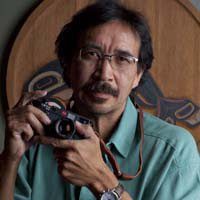
Photographer and printmaker Larry McNeil’s work is largely informed by his Native American identity and his awareness of the intersections and conflicts within American culture. “I love the idea of making art that was designed to act so specifically as an ambassador for our people. I was thinking of who we really are as Americans, both Indigenous and proverbial ‘melting pot’ that forms our collective identity,” McNeil said. “I was thinking of early Cowboy and Indian films that formed the world’s perception of who we are, especially as a mythical place.”
Source: Smithsonian National Museum of the American Indian
Website
https://www.larrymcneil.com/
